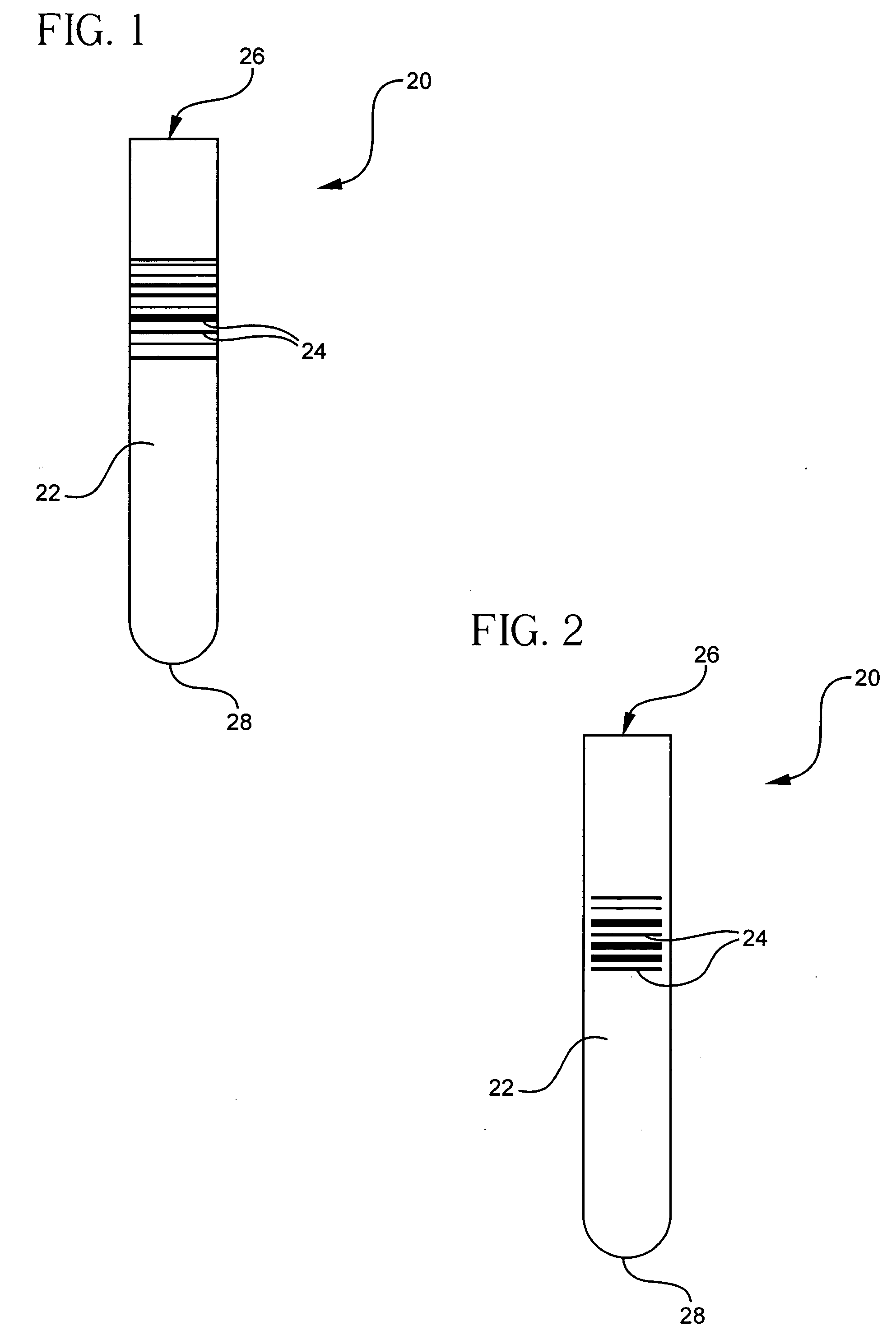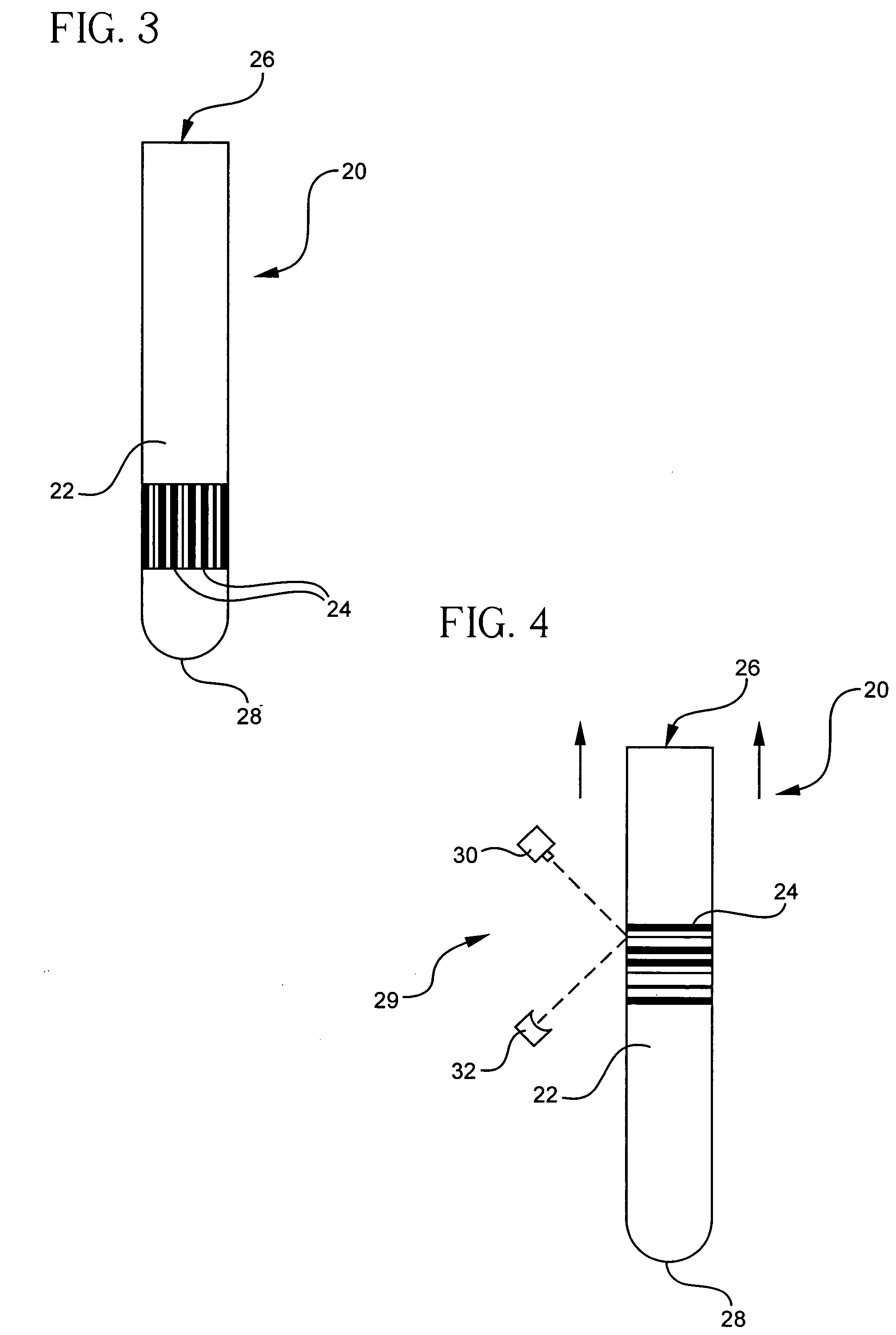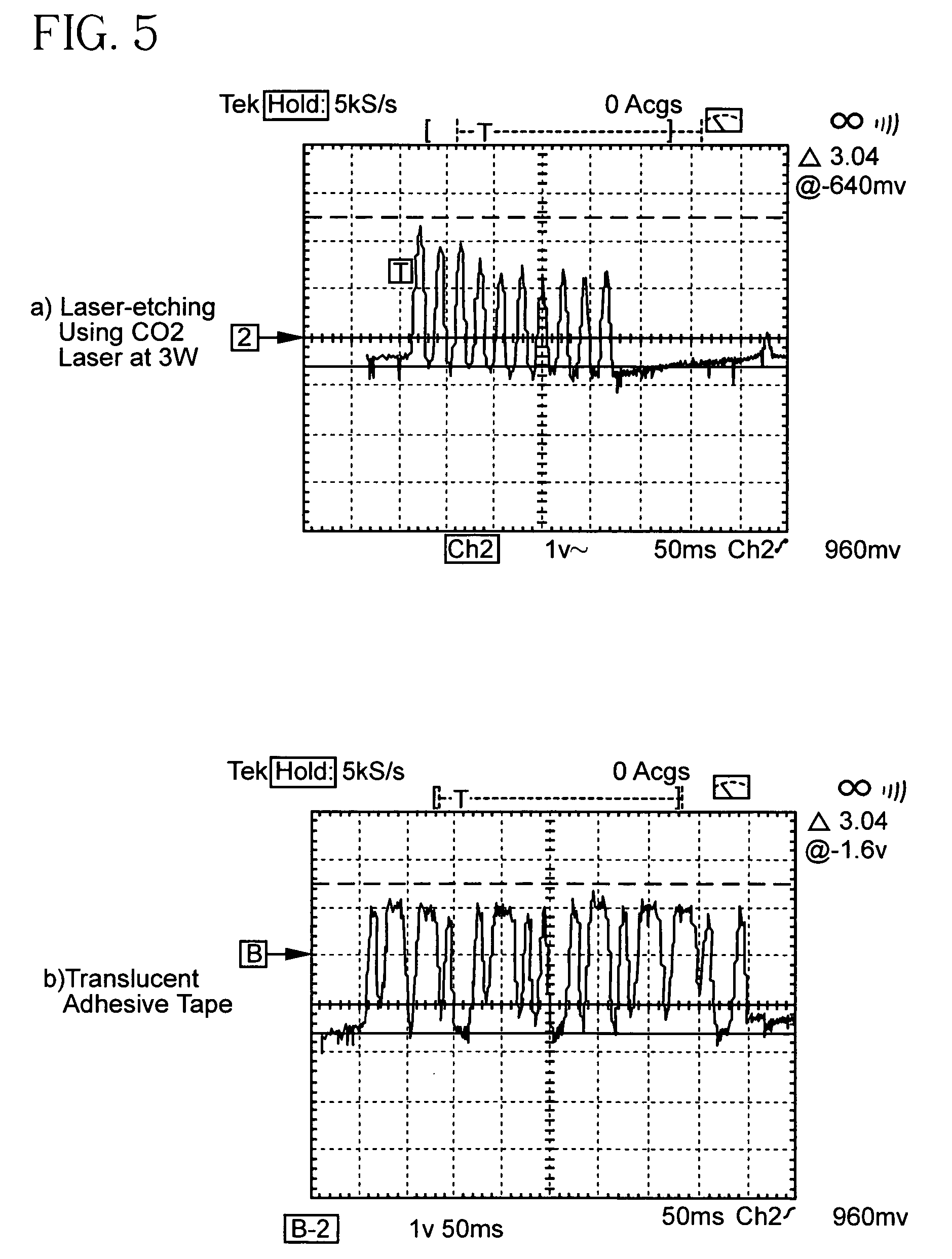System and method for universal identification of biological samples
a biological sample and system technology, applied in the field of system and method for universal identification of biological samples, can solve the problems of not universal, unusable identification, and patient denied necessary treatment,
- Summary
- Abstract
- Description
- Claims
- Application Information
AI Technical Summary
Benefits of technology
Problems solved by technology
Method used
Image
Examples
Embodiment Construction
[0032] The present invention comprises a system and method for identifying biological samples. Each sample is associated with a particular container. Each container is marked with a universally unique identifier comprising one or more identifying markings formed on the container that uniquely identify that container. Means are provided for detecting or reading the markings to determine the identifying information.
[0033] In the following description, numerous specific details are set forth in order to provide a more thorough description of the invention. It will be apparent, however, to one skilled in the art, that the invention may be practiced without these specific details. In other instances, well-known features have not been described in detail so as not to obscure the invention.
[0034]FIG. 1 illustrates a container 20 marked in accordance with one embodiment of the invention. In the embodiment illustrated in FIG. 1, the container 20 is a test tube or vial, although other types...
PUM
| Property | Measurement | Unit |
|---|---|---|
| power | aaaaa | aaaaa |
| specular reflectance | aaaaa | aaaaa |
| translucent | aaaaa | aaaaa |
Abstract
Description
Claims
Application Information
 Login to View More
Login to View More - R&D
- Intellectual Property
- Life Sciences
- Materials
- Tech Scout
- Unparalleled Data Quality
- Higher Quality Content
- 60% Fewer Hallucinations
Browse by: Latest US Patents, China's latest patents, Technical Efficacy Thesaurus, Application Domain, Technology Topic, Popular Technical Reports.
© 2025 PatSnap. All rights reserved.Legal|Privacy policy|Modern Slavery Act Transparency Statement|Sitemap|About US| Contact US: help@patsnap.com



